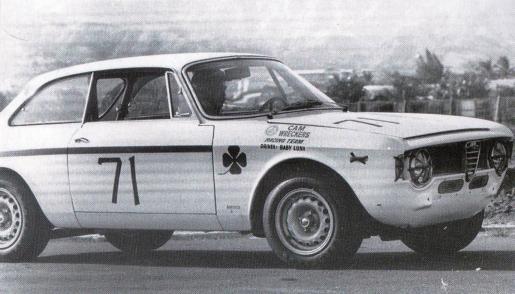
Clamors rage on the ability of the Philippines to host an F1 race after the recent trademark filings done by Formula One Licensing BV which happened early January this year. While this remains a debate, it’s good thing to know that a huge interest in such sport still exists among Filipinos. Did you know that much of racing’s history happened in Cebu?
Filipinos have long developed a love for racing. In fact, long before bicycle racing began in the 1890s, carabaos and horses have been on dirt tracks on different regions in the country. In 1937, dealers of Luneta Motor Company, Chrysler and Plymouth, presented the first automobile stunt show at the Rizal Memorial Coliseum which aimed to demonstrate the safety aspects of an “all-steel” enclosed vehicle models for racing. In the ‘50s, car racing was revived and circuits were duly established in the tracks of Santa Ana, Makati and Nicholas Air Base. This was where the great Arsenio “Dodjie” Laurel started his racing career in motorsports.
Dodjie Laurel then became the pioneer of Philippine Motorsports. Later, he founded the Cam Wreckers Association, the first formal car club in the country, and earned the moniker “Father of Philippine Karting” as he became active in other forms of racing. His name became known in the internationals after championing successively in 1962 and 1963 the prestigious Macau Grand Prix. Sadly, he was also the very first fatality of the same competition in 1967 after his car crashed, hit the seawall, and burst into flames causing his entrapment and immediate death.
Though car racing in the Philippines was put to stop in 1956 because of an accident, this absurdly resulted to more and more people getting interested into motorsports as means of competition. When Soap Box Derby was introduced in the Philippines, boys aging 11 – 15 became engrossed in competing using homemade engineless cars. Since then, derbies were held sponsored by Better Boys Association (and many others) until early ‘70s. In 1962, a derby was held in Pardo, Cebu which was sponsored by the Cebu Jaycees wherein the local winner represented the country in the International Soap Box Derby competition Akron, Ohio.

Alfa Romeo Giulia GTA Junior (white car) of Roberto Baby Luna during the First Philippine Grand Prix in Cebu on 1969. Photo by alodecals.
Dodjie Laurel’s legacy went on, and so as Cam Wreckers Association. In 1969, the temporary street circuit of the reclamation area became the area of the First Philippine Grand Prix which was held in Cebu City. This then resulted to the astounding growth of Philippine Motorsports. In fact, circuit racings in Laguna and Greenhills were created and opened doors for racing legends like Louei Camus, the late Arthur Tuason, Dante Silverio, and the late Pocholo Ramirez. However, because of urban and economic developments, these tracks were put to close and Philippine Motorsports even suffered more when the use of fossil fuel was banned because of oil crisis.
Racing was still alive in Cebu. Though, there were no organized racing events, illegal racing scene was predominant in the province. There was a time in history when Saturday nights were a big thing and the whole Cebu Reclamation area would just be filled with cars for drag racing. The audience and participants grew so big that well-known street racers were called by the Cebu City Hall to formally organize, so as to support legal drag race and control the area for a safer environment. This then resulted to the creation of Cebu Auto Sport Association. The first drag race was organized in 1990 with rules adopted from the Cam Wreckers Association. Eventually, illegal racing died.
Currently, motorsports is still alive in Cebu as seen in various karting, autocross, and off-road racing arena. However, drag racing became difficult to revive with the province’s urban and economic growth. However, Filipinos have been consistently making names and waving flags in other countries, showing that the pioneers didn’t lose their lives for nothing for this passion for racing. We can only hope that more support will be gained so that, like our neighboring countries, we’ll be able to host International racing competitions again.
Sources:
https://weekend.sunstar.com.ph/blog/2014/09/05/flashback-friday-philippine-motorsports/
https://www.philstar.com/sports/2012/02/25/780603/ventura-joins-golden-wheel-hall-fame